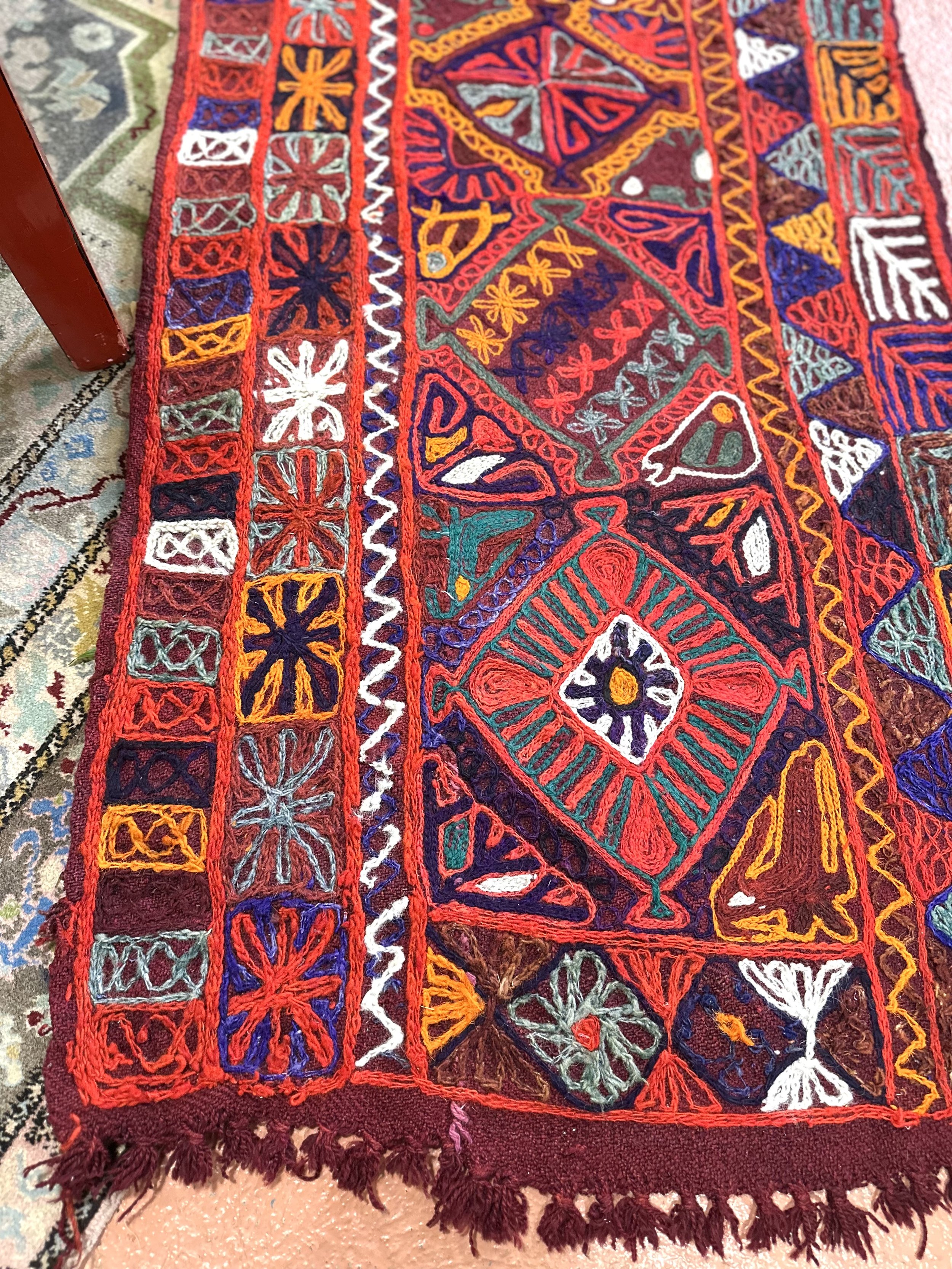
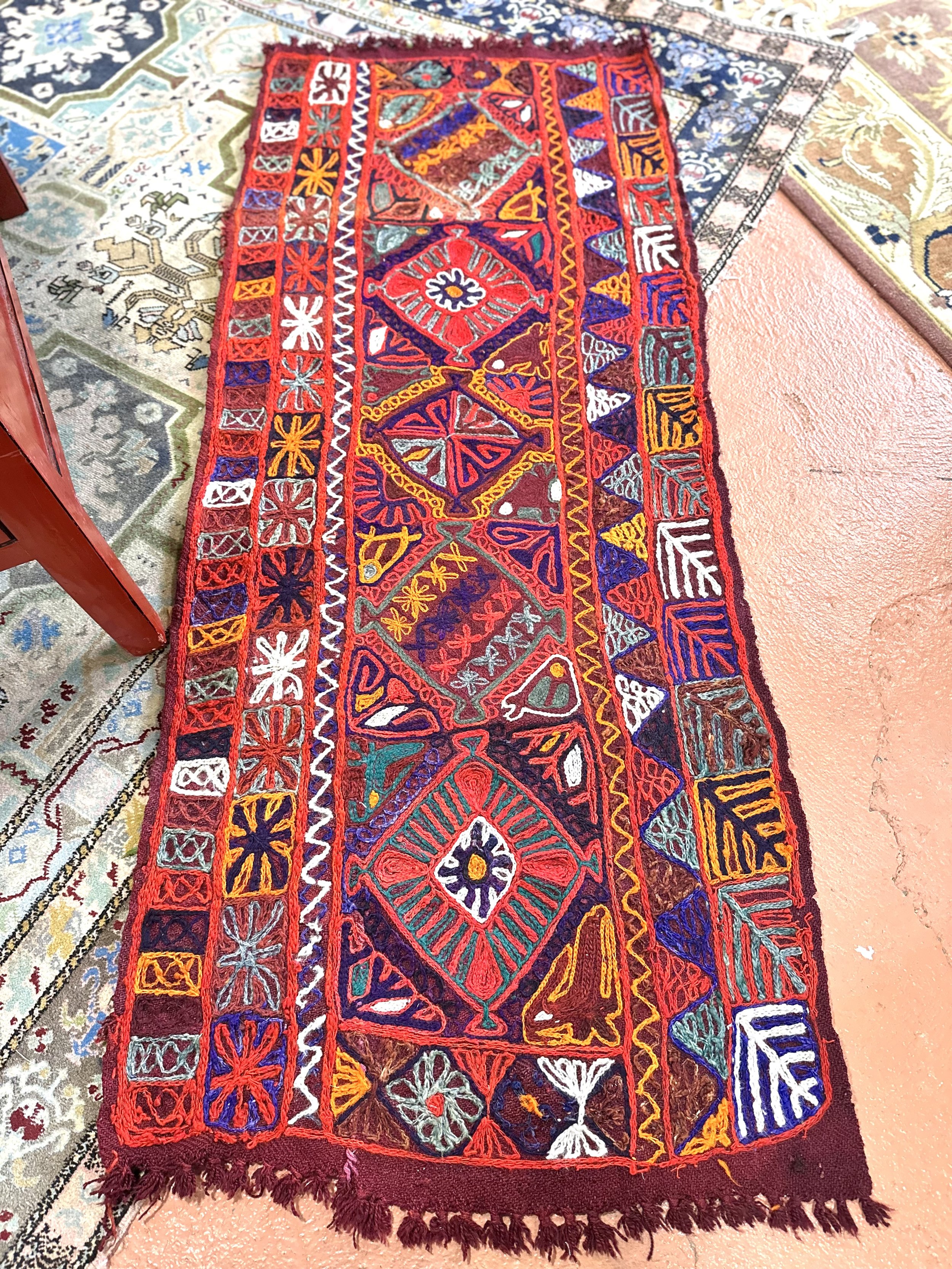
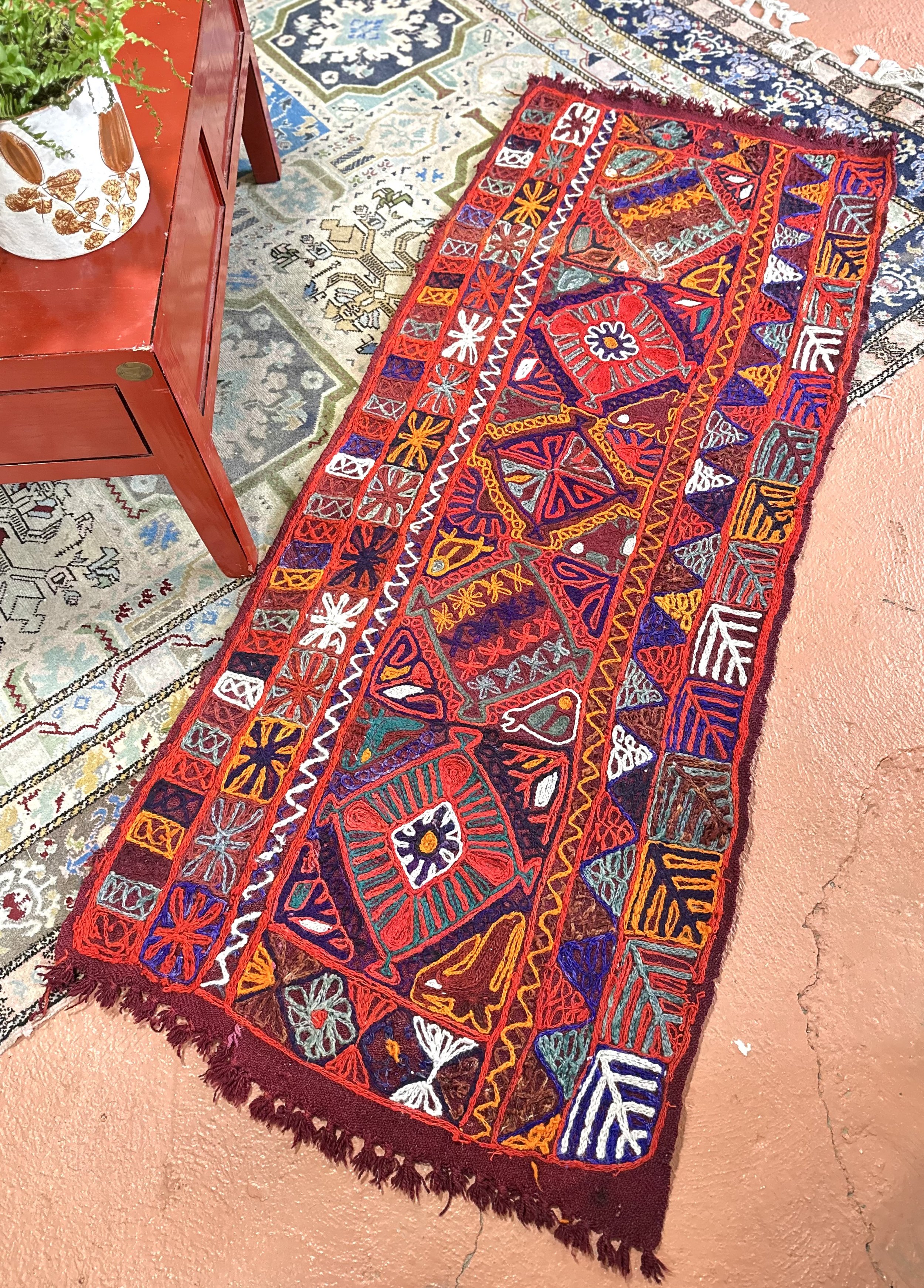
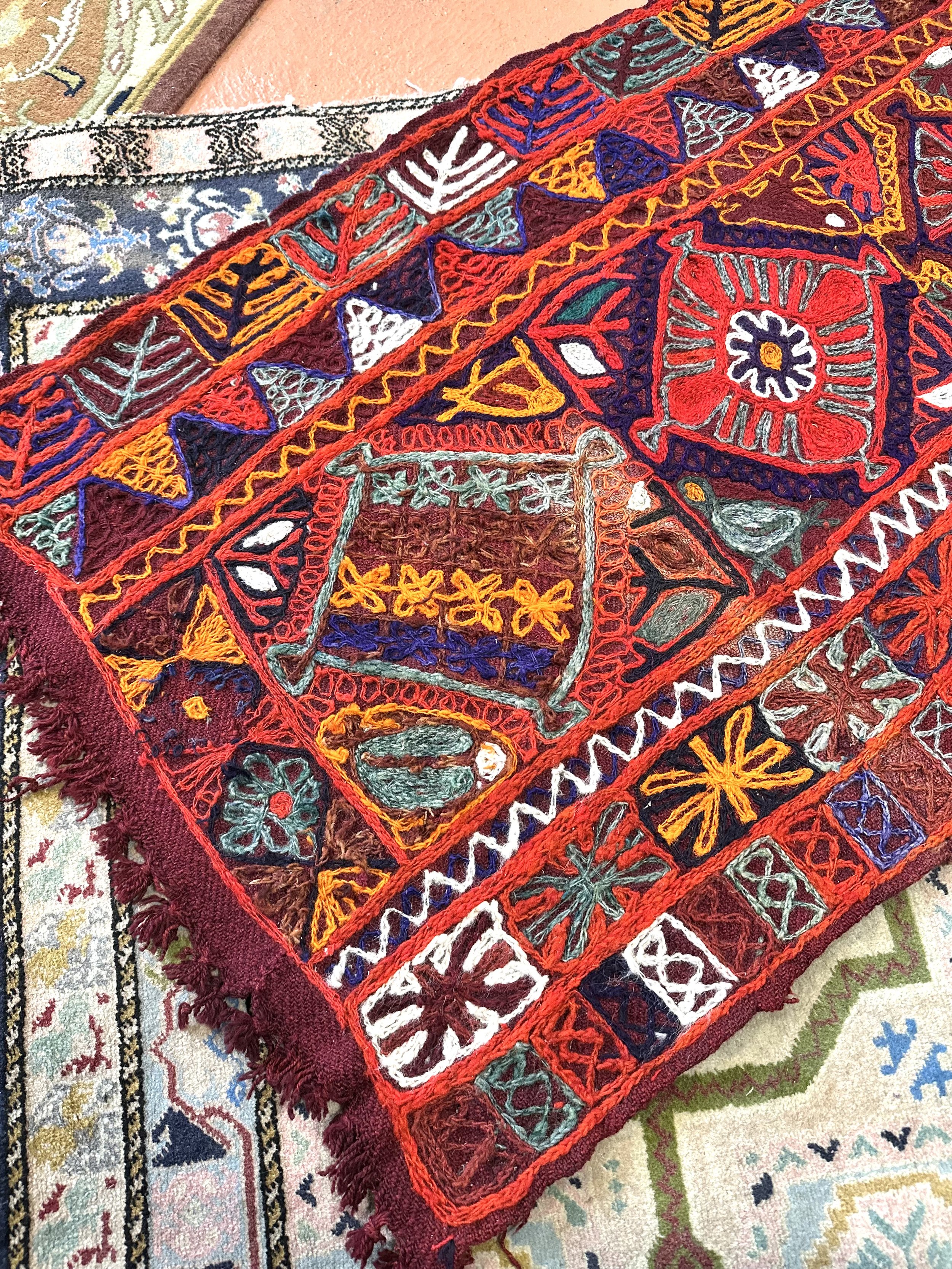
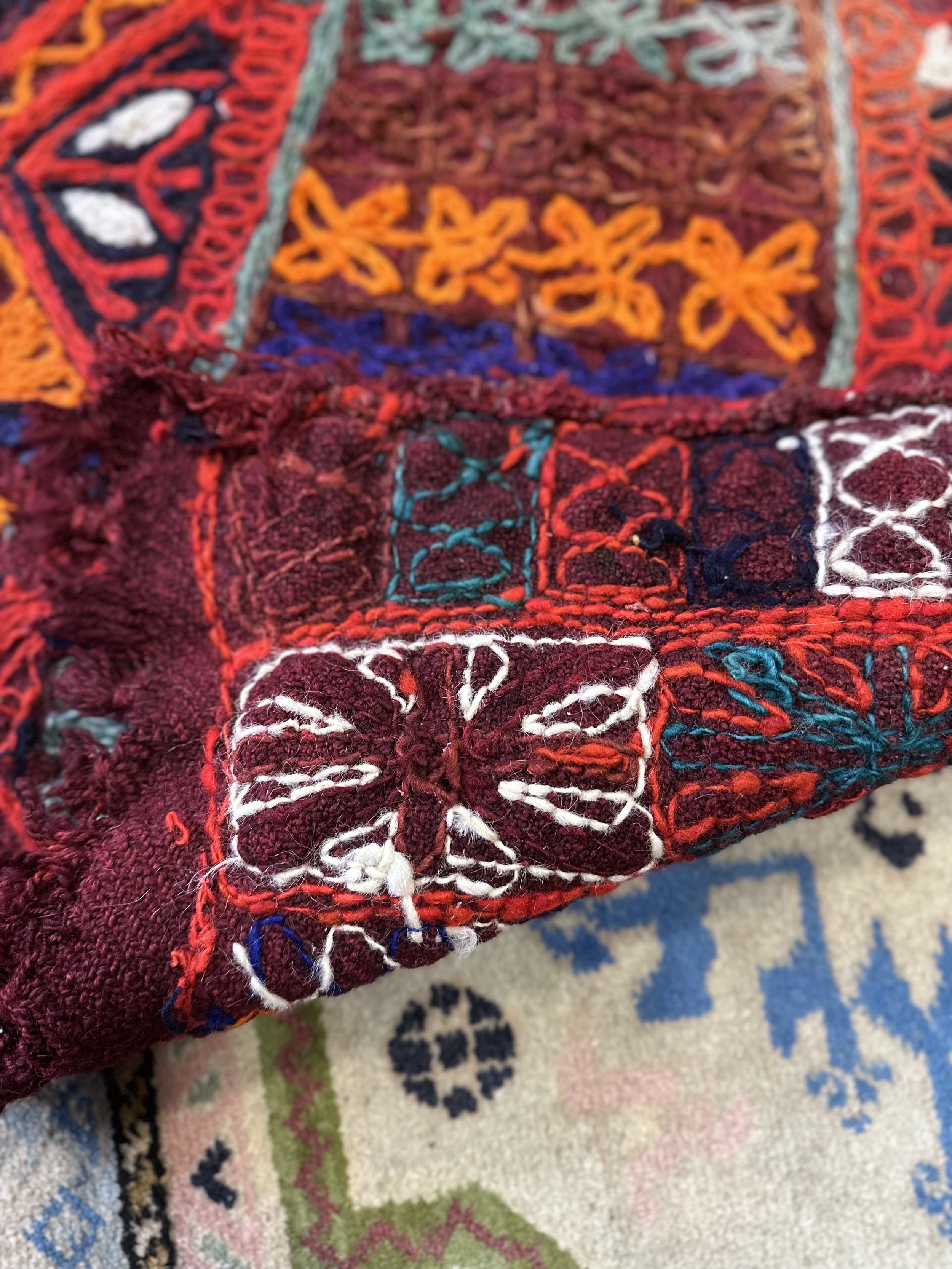
Vintage Woven Ma’adan Marsh Arab Blanket Rug
This mid 20th century carpet blanket was handmade and embroidered by the Ma’dan people.
The Ma’dan used to live in the marshes in southern Iraq, where the rivers Euphrates and Tigris meet. They are known for their elaborately embroidered “wedding blankets”, known as Izar in Arabic.
Predominantly, young unmarried women embroidered the blankets by hand for their bridal chests. This is probably the main reason why the textiles are commonly referred to as wedding blankets. On some occasions, mothers would embroider a blanket for their son before his wedding.
The blankets are traditionally made from a twill-bound reddish-brown wool panel, upon which the women would embroider their various designs with a chain stitch technique using a crochet hook.
The width of the blankets was determined by the size of the loom, so they were often made from two narrow panels of the same size sewn together. This particular example is one panel, it might have always been a single panel or someone perhaps split two panels from a wider blanket.
It has signs of wear and age, including some breaks in the embroidery and pulls in the wool. There is also a small faded stripe towards one end. Otherwise it’s still very stable, the colours are still very bright and it doesn’t have any offensive smells.
It would suit being used as a decorative throw or as a rug in an area where it won’t get a lot of heavy wear.
Measures 180cm x 74cm
This mid 20th century carpet blanket was handmade and embroidered by the Ma’dan people.
The Ma’dan used to live in the marshes in southern Iraq, where the rivers Euphrates and Tigris meet. They are known for their elaborately embroidered “wedding blankets”, known as Izar in Arabic.
Predominantly, young unmarried women embroidered the blankets by hand for their bridal chests. This is probably the main reason why the textiles are commonly referred to as wedding blankets. On some occasions, mothers would embroider a blanket for their son before his wedding.
The blankets are traditionally made from a twill-bound reddish-brown wool panel, upon which the women would embroider their various designs with a chain stitch technique using a crochet hook.
The width of the blankets was determined by the size of the loom, so they were often made from two narrow panels of the same size sewn together. This particular example is one panel, it might have always been a single panel or someone perhaps split two panels from a wider blanket.
It has signs of wear and age, including some breaks in the embroidery and pulls in the wool. There is also a small faded stripe towards one end. Otherwise it’s still very stable, the colours are still very bright and it doesn’t have any offensive smells.
It would suit being used as a decorative throw or as a rug in an area where it won’t get a lot of heavy wear.
Measures 180cm x 74cm

